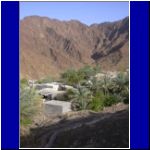
From the spring, looking down on the houses |
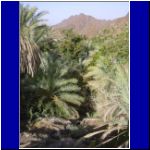
Though the water flow these days is modest, the oasis is healthy |
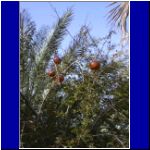
Pommegranate is a popular fruit grown at Musah |
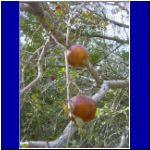
The pommegranate trees at Musah are larger than we find at other communities |
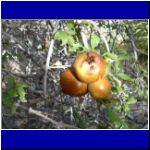
A rare triple |
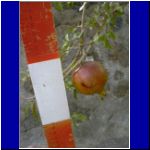
The meter stick demonstrates how large and succulent the fruit are |

Not all of the fruit is harvested at Musah, an indication of the decline in
farming there |

Lemon and other citrus crops are in abundance |
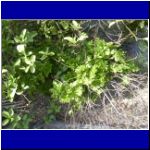
However some lemon trees show the same blight evident in other oases |
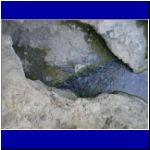
Looking down into the spring |

In the center of the photo one of the bubbling springs |
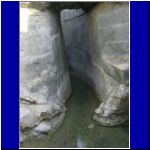
From the spring, the view down the deep channel cut into the mountain |
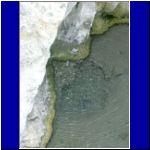
Ripples evidence of the running spring |
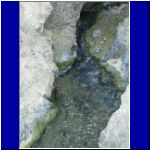
The strongest spring gurgles from a crack in the rock |
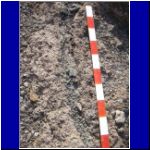
From the summit, where there were once many springs, evidence of abandoned
water channels |
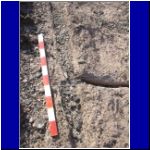
The slope of the mountain here is covered in tufa, with many small rivulets |

The view from the summit down onto the oasis |
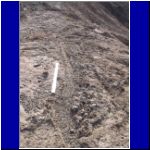
Another of the small water channels that once carried spring water down the
slope |

Minerals once dissolved in the spring water built up the sides and bottoms of
these channels |
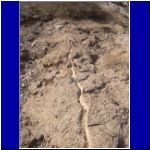
This small channel winds down the steep face |

There are some walls that do not seem to have any purpose |
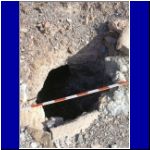
One of the access holes used to tunnel into the mountain to the spring |

At this section of the trail, there are three springs, one with three access
holes |

Members inspecting the rock mined from the spring channel |

Musah features several well-built small bridges over the deep falaj channels |
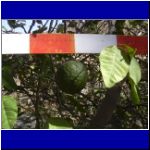
There were many orange trees in the oasis |
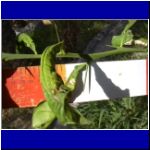
The long, sharp thorns of the orange tree make harvesting a challenge |

Another view of the sharp thorns |
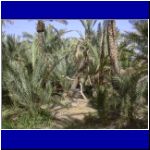
The oasis, while maintained, is not in prime condition |
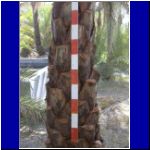
A neatly trimmed date palm is evidence not all fields are being neglected |

Grapes, often found in mountain oases, were doing well at Musah |

Detail of the healthy grape vines |
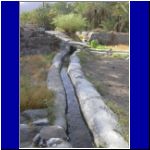
The fallaj system at Musah is a combination of block, mud and shaped cement |
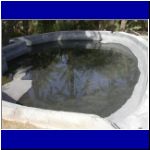
There are several reservoirs inside and on the edge of the oasis |

Bundles of straw are all that remain of this grain crop |
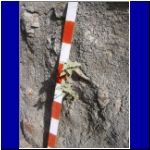
A plant growing in the vertical face of a wall |
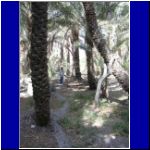
The farm laborers, as in many oases, are now exclusively from Asia |
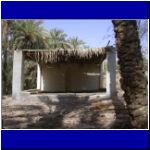
One of two small mosques in the oasis |
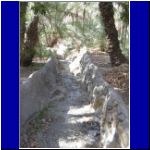
Combination footpath and falaj |
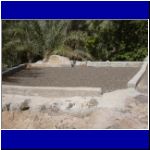
An open air mosque |
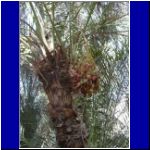
Dates ripening |
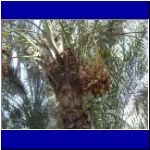
Another view of dates ripening |

Evaporation and dissolved minerals leaves a film on the surface in this small
reservoir |
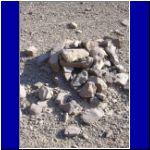
A small curious construction, perhaps a fox trap |

Another view of the trap |
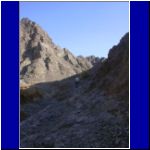
A well-worn path leads beyond the oasis |
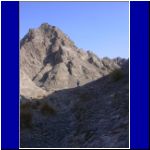
The path leads to a mountain stream, some archaeology and grass |
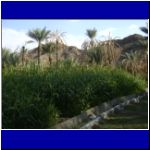
Some of the lush growth in the stream bed beyond the oasis |
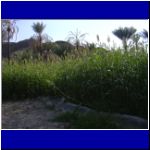
Another view of the grass |

Looking back at the oasis from the trail |
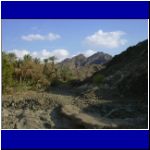
The view up one of the side wadis; there are houses and walls in all
directions |

The walls serve to protect the terraces from the powerful stream that washes
down this side wadi |
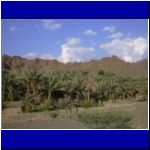
Musah is actually a collection of several small farms dotted along the wadi
bed |
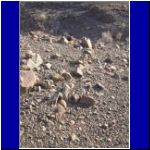
One of the constructions on the gravel plain opposite the oasis |
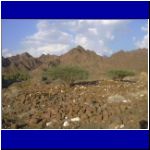
A general view of the remains of buildings |
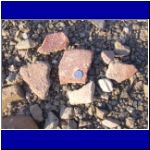
Pottery is in abundance, most of it Islamic |
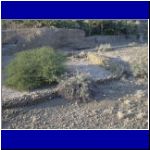
In the main wadi bed, a thick stone wall protects a small terrace |

The view up the wadi bed, the oasis on the left, the archaeology on the right |
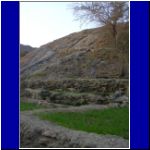
Evidence of old walls and terracing |
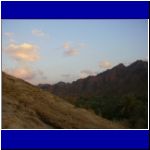
The winter sky over Musah |
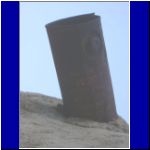
An old oil container used as a drainspout |

Another view of the drainspout |

In the village, a date storage jar |
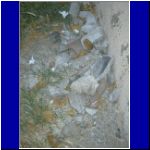
Building rubble and garbage collect in the yards of abandoned houses |

A small opening to drain water from a yard into the 'street' |
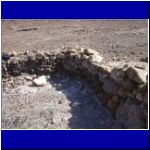
A large stone wall -- surrounding a courtyard? -- in the montains near Musah |
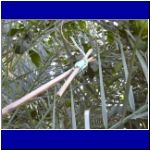
An innovative tool for harvesting oranges |
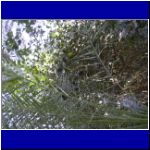
The oranges of early winter were not ripe yet |
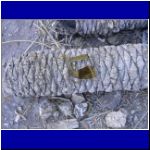
A birka abandoned in the oasis |
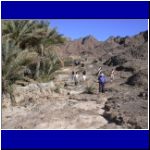
The group making its way down into the main wadi bed |
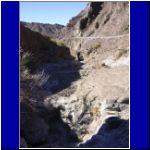
The view from the wadi bed to the falaj clinging to the mountain side |

Remains of an old deflection wall |

Some of the group enjoyed the view from the falaj |
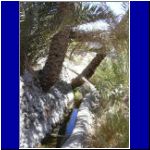
Some date palms appear to be growing in the walls of the falaj system |

Mango trees and date palms provide shade for other crops in the oasis |
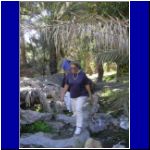
The group navigating the path through the oasis |
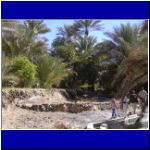
The different colors and leaves indicate a variety of crops |
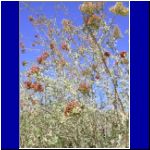
Henna plants are often found around the perimeter of oasis terraces |

These henna plants are in full fruit |
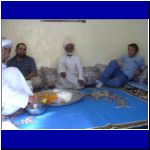
The group was invited to enjoy coffee and fruit, the men in one majlis, the
women in another |

One of the women of the community with a classic Omani burka |
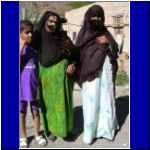
Women and grandson? in one of the houses |
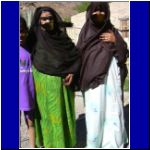
Another view of the women |
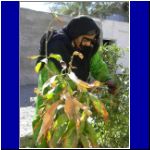
A woman harvesting leaves from a plant grown in the yard |
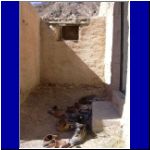
Boots and sandals outside the men's majlis |
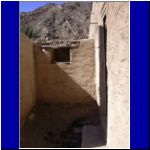
Another view of the walls of the majlis, house |
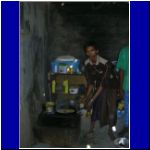
Inside the kitchen in the home of some of the laborers |
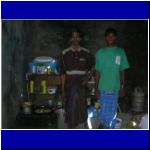
The laborers posing for a photo in the kitchen |
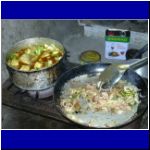
Lunch! |

Brien in conversation with some of the men who returned to the village for
Friday prayers |
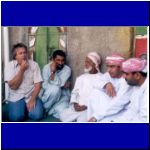
In most communities, family members return to the old houses each Friday |























































































